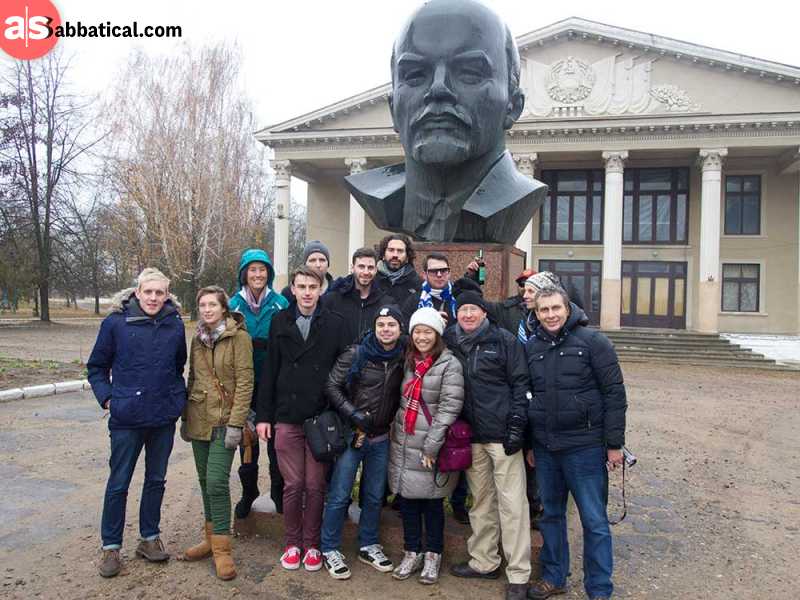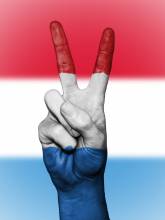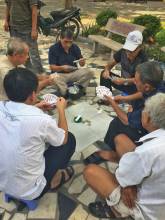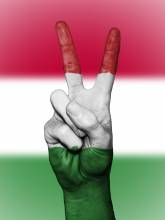Transnistrian People
Places like Transnistria sound all too much like a product of fiction out of a Tolkien book than being an actual country; and in a way, that’s true. You won't find any territory in all of Europe
sound all too much like a product of fiction out of a Tolkien book than being an actual country; and in a way, that’s true. You won't find any territory in all of Europe , and the rest of the world that recognize Transnistrian people and Transnistria as a real nation.
, and the rest of the world that recognize Transnistrian people and Transnistria as a real nation.
For most, Transnistria is more commonly accepted as an independent territory within the state of Moldova —it has its flag, its own currency, even its own capital city, but the one thing it does not have is the status of a national state.
—it has its flag, its own currency, even its own capital city, but the one thing it does not have is the status of a national state.
After declaring their independence from Moldova in 1990, this newly found “country” was set to live their way, pledging allegiance to the USSR and Communism.
Their declaration of independence triggered a brutal civil war in Transnistria with Moldova, ceasing in 1992 with Moldova accepting the newly found Independent Territory, allowing it to rule how they wish.
Introducing the Real Transnistrian People

Wedged along the River Dniester, this thin sliver of land is the home to over 300,000 Transnistrians who live a basic life within one of the few remaining Communistic societies.
The Transnistrian people live somewhat surreal but straightforward lives here. Top to bottom, from the richest to poorest, this country is somewhat of a wasteland of what could be.
You will see most houses, apartment, even hotels, all have the appearance of utter ruin and deterioration. It has the atmosphere much like a ghost town—an entire country seems stuck in the past, stubborn to their ideals.
You would be amazed seeing the condition of most of the villages, houses, and apartments along the roads until you reach the larger cities or churches. But, we’ll get to that in a bit.
The Transnistrian people though have a work ethic that cannot be matched by any other society. There is no importance on who you are, what you do, if you’re a child or senior citizen, the Transnistrian people work and work and then work some more.
Kids as young as 12 could have full-time jobs and still manage to go to school. Despite the question style of their society, most Transnistrian people are quite optimistic when it comes to everyone's future.
Something needs to be said about their faith, that near undying belief that tomorrow has a chance to get better—even if that means having to work from first light to twilight every day.
A One-In-A-Million Culture

I’m about to make a genuinely bold claim here, bear with me—you will never find a culture and society quite like that in Transnistria.
I will never forget driving from Odessa in Ukraine and passing through Transnistria’s border patrol and to have the officer ask me “why I want to visit this country” with a rather perplexed look on his stern and brutish face. I said “Yes,” and with a second glance back to me, in what looked like a puzzles manner, he wished me good luck and I was on my way.
and passing through Transnistria’s border patrol and to have the officer ask me “why I want to visit this country” with a rather perplexed look on his stern and brutish face. I said “Yes,” and with a second glance back to me, in what looked like a puzzles manner, he wished me good luck and I was on my way.
Read more: The Soviet Heritage
It’s a country devastated by poor living conditions and an even more mediocre economy. To say that Transnistria is without a doubt the most impoverished country, um… “place” in all of Europe.
Not to add insult to injury, but when you consider a declining population (nearly 50% less in last decade), a Trade Contract with the European Union coming to an end, and turmoil within their Parliament (lots of Propaganda and corruption) -- the future doesn’t look all too bright for these optimistic people.
It’s a hard reality when you look closer. It makes you wonder if their choices like communism instead of a democracy played any factor in leading their culture down a very barren path.
However, despite all that Transnistria appears to be, Transnistrian people are still quite happy with their choices.
Everywhere you go, you will be sure to find plenty of Communistic apparel from toys, statues and statuettes, and thousands of knick-knacks in all stores and outside buildings. It’s quite entertaining.
What to See & What to Do?

Unfortunately, there isn’t an abundance of things do to or see in Transnistria outside the capital city of Tiraspol. Over 50% of the population can be found here, and yet the city could severely be misinterpreted as a ghost town. Tourism in Transnistria isn't really developed.
My journey into the heart of Tiraspol was found with genuine surprise to see very few if any people on the streets. Even at their markets, which was a decent size, to be honest, but just lacked people populated the venue.
The big thing I was more than happy to take in was the creative architectural design of its buildings and its churches. The churches, well, they were the most well-kept places in the country. It was clear that the Transnistrian people are devout in their faith and preserving that above their wellbeing.
Read more: Places To Visit in Transnistria
I do recommend taking a couple of hours to devote to passing through Transnistria and taking in some perspective of a culture suffering but completely satisfied in their daily lives.
I do want to prepare you to in case you make a similar wrong turn as I did.
On the direct way from Tiraspol to Chisinau (Moldova), I drove into a dead-end. The war destroyed a border-bridge. Instead of repairing it, two soldiers guarded it with a tank. Quite frightening.
But, with money tight and an Army with plenty of guns, these are the kind of situations one could run into if you venture the wrong ways.
Anyway, the soldiers friendly signalized the dead-end and directed me to another road. Without speaking a word English!
Transnistria is literally in a world of its own—occupied with hard-working, optimistic people and tirelessly work to see tomorrow. Unfortunately for them, their “country” is steadily declining into turmoil with falling population size, a soon-to-expire contract with the EU for trade, and an economy that appears to be degrading. It’s a rather pleasant but depressing place where buildings, villages, homes, look worse for ware—living conditions border unfit for humans. Behind all the poor appearance, the Transnistrian people are kind, hard-working, and stubborn. While this country remains isolated from the rest of the world, they continue to follow their old values and through hell or high water they continue to try to make a put their name on a map—literally.













